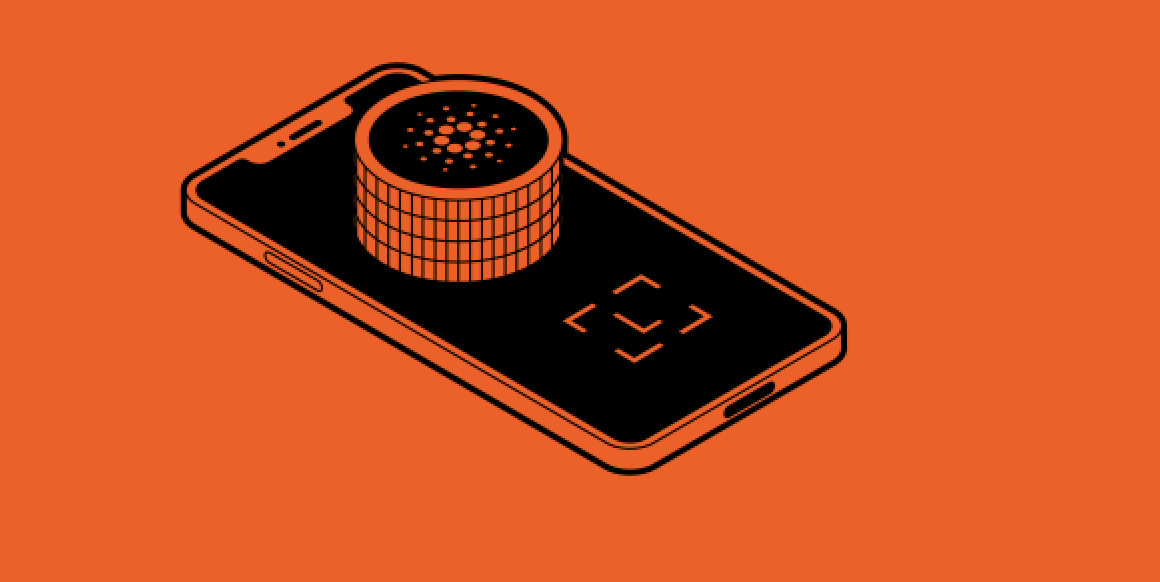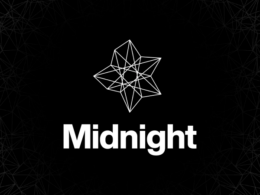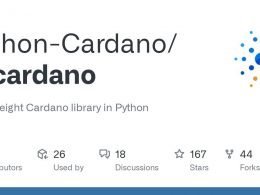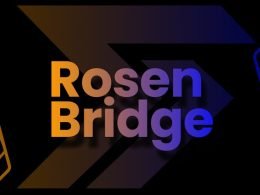Link To Proposal: https://cardano.ideascale.com/c/idea/105925/comments
Disclaimer: The following assessment is based on the Ledger Live Integration Maintenance Proposal and an interview conducted with the proposer, Ashish. This assessment is intended to provide an overview of the project and its potential impact on the Cardano ecosystem. It is not intended to serve as advice or a recommendation to take any voting or funding action.
Proof of Reputation:
- Working Product or MVP? During two previous Catalyst projects, the Ledger Live integration has been built, and staking services have been developed by the Strica Team.
- Available Skillset to Deliver? The proposer demonstrates a strong skillset and expertise in maintaining and updating the Cardano-Ledger Live integration. Their team consists of dedicated individuals with specialized roles to deliver.
- Previous Proposals and Completions? Strica has actively participated in the Project Catalyst program, proposing and completing multiple proposals. Out of eight previous proposals, seven have been fully delivered, and one is currently ongoing in delivery
Context:
- Category: Products & Integrations
- Funds requested: 200.000 ADA
- % of category funding: 2.2%
- % of total funding: 0.4%
1. Proposal Description:
First, let’s start with an overall understanding of what the proposal is about:
Overview: The Cardano Ledger Live integration proposal aims to secure funding for the next 12 months to maintain and update the open-source codebase that enables seamless integration of ADA and native assets into Ledger Live. This integration was initiated through a collaborative effort involving the Cardano Foundation, Cardano Ambassadors, Strica, and Ledger. The project’s previous phases have successfully integrated ADA management and staking on the Cardano Blockchain through Ledger Live, benefiting thousands of Ledger users.
Purpose: The proposal’s primary goal is to address the challenge of sustaining the Cardano-Ledger Live integration by obtaining funding for professional maintenance, bug fixing, and updating capacity. This maintenance is essential to ensure that Cardano asset holders can continue using Ledger Live to manage their ADA holdings efficiently.
Project Background based on the interview with Ashis:
The project’s collaboration began during Catalyst Fund 7, and it has continued through Fund 9 with integrating Staking. Strica has been maintaining the open-source code for the Cardano-Ledger Live integration. The responsibility for maintaining blockchain integrations with the Ledger platform lies with the respective blockchains. Thus, securing funding for the Cardano-Ledger Live integration is essential to maintain its seamless operation for the Cardano community.
The project has faced several challenges and complexities in its journey. One of the significant hurdles was encountered during the implementation of Cardano staking inside Ledger Live (Fund 9). The original proposal aimed to integrate staking by a certain timeline, but unforeseen developments arose, leading to delays and additional work.
The team successfully completed the integration of staking into Ledger Live six months before the proposed deadline, but Ledger’s internal changes posed a challenge. Ledger decided to transition their entire ecosystem from JavaScript to TypeScript, requiring a rewrite of the existing JavaScript code to TypeScript. This task was beyond the scope of the original proposal, and it meant additional efforts and resources were needed.
The team faced a dilemma as it was difficult to seek additional funds. Hence, the team decided to take the initiative and invested their own resources and time to rewrite the integration in TypeScript. Despite not seeking external funding, they aimed to deliver the integration successfully.
2. Project Team: in depth information gained from an interview
An understanding of who is behind the project can shed light on their capability to execute it:
Team Members and Background: The project team behind the Cardano Ledger Live integration proposal consists of Strica. Strica has been actively involved in the Cardano ecosystem since the Shelley period, demonstrating a strong commitment to the platform’s development and growth. The team at Strica has successfully completed several projects within the Cardano ecosystem, showcasing their expertise and dedication.
Skills and Expertise: The team at Strica possesses a diverse skill set essential for executing the Cardano Ledger Live integration project effectively. They have dedicated individuals with expertise in various domains, including:
- Mobile Development: Strica has a dedicated mobile developer responsible for handling changes and upgrades on the mobile app. This expertise is crucial for ensuring a smooth and user-friendly experience for Ledger Live users on their mobile devices.
- Desktop Development: Another dedicated team member at Strica works on the desktop version of the Ledger Live integration. This ensures that users on desktop platforms can also seamlessly manage their Cardano assets through Ledger Live.
- CLI (Command Line Interface) Development: Strica has a dedicated team member who works on the CLI codebase, including the core “common” codebase that integrates with both desktop and mobile versions of Ledger Live. This expertise is essential for maintaining the integration’s core functionality.
- UI/UX Integration: Two team members at Strica handle the UI/UX integration, ensuring that the Ledger Live integration is visually appealing, intuitive, and user-friendly.
The combination of these skills ensures that Strica has the technical capabilities to address various aspects of the integration, from codebase maintenance to user interface design.
Track Record:
The Strica team has a notable track record, showcasing their contributions to the Cardano ecosystem. They have successfully completed multiple projects through Project Catalyst, including Cardanoscan, a widely-used Cardano explorer, and Typhon, a highly regarded user-friendly wallet. Additionally, Strica played a significant role in delivering the Cardano ADA and native tokens integration within Ledger Live, expanding Cardano’s accessibility to Ledger’s extensive user base.
Their commitment to open-source libraries further demonstrates their dedication to providing valuable resources for developers. In the context of Project Catalyst, they have achieved an impressive delivery rate, with seven out of eight proposals fully completed, and one ongoing project, the Cardano Scan API Service from Fund 6.
3. Impact Assessment:
Understanding the potential impact of the project is crucial:
Target Audience: It is unknown how many Cardano Community Members are actively using the Ledger Live Features. Therefore the target audience and its size are not known. However, since Ledger is the Leading Hardware wallet, providing a Ledger Live integration with ADA seems like a prerequisite.
Methodology: The proposed methodology for achieving the project’s goals involves a series of quarterly milestones, each representing three months of successful maintenance and updates to the Cardano-Ledger Live integration open-source code. The project team aims to address various aspects of maintenance, including bug fixes, code enhancements based on user feedback, and updates to accommodate changes in Ledger Live. The methodology’s flexibility allows the team to adapt and respond to unforeseen issues or requirements that may arise during the maintenance process. This approach ensures that the integration remains functional and up-to-date, providing a seamless experience for Cardano asset holders using Ledger Live.
Timeline: The project’s timeline spans 12 months, divided into four quarterly milestones, starting from Q3, 2023, and concluding in Q2, 2024. Each milestone represents a significant period of maintenance and updates, ensuring the continuous smooth operation of the Cardano-Ledger Live integration.
Each Milestone might contain the following activities:
- Continuously monitoring and addressing any new bug reports or user feedback.
- Implementing code enhancements to optimize the integration’s performance and user interface.
- Collaborating with Ledger to ensure seamless compatibility with upcoming Ledger Live updates.
- Conducting necessary maintenance to align the integration with any changes in the Cardano blockchain.
- Rigorous testing and quality assurance to ensure the integration’s stability and reliability.
4. Risk and Contingency Planning:
Every project faces potential risks and challenges. How are these addressed?
- Risk Identification: The Cardano Ledger Live integration project acknowledges certain potential risks and challenges that could hinder its progress. The biggest risk lies in Ledger Live undergoing fundamental changes, such as code changes, which may result in unforeseen efforts not covered in the original proposal. Additionally, there is a low probability, yet noteworthy risk, that Ledger Live goes out of business, leading to the cessation of maintenance requirements for the integration.
- Risk Mitigation: To address the risk of Ledger Live undergoing fundamental changes, the Strica team remains in close communication with Ledger Live, participating in weekly calls to keep track of any upcoming developments or codebase alterations. This proactive approach allows the team to stay informed and adapt their maintenance efforts accordingly, minimizing the impact of unforeseen changes. Additionally, the team’s continuous collaboration with Ledger Live ensures they can address any emergent challenges promptly and efficiently.
- Contingency Plans: In the event of unforeseen and extensive code changes within Ledger Live, not covered in the original proposal, the Strica team plans to leverage their open-source development on GitHub to transparently track their progress. By submitting detailed milestone records and providing links to their pull requests, they ensure the community can easily quantify the additional work required. The team’s proactive engagement with Ledger Live also allows them to explore potential alternative plans to address unexpected changes effectively.
5. Budget Estimation:
A breakdown of the project’s budget provides insight into its financial feasibility:
- Detailed Budget: The proposed budget for the Cardano Ledger Live integration project is 200,000 ADA, divided into four equal parts, with each milestone requiring 50,000 ADA.
- Value for Money: By maintaining the Cardano-Ledger Live integration, a secure and user-friendly solution is provided to Cardano users, enhancing their overall experience and confidence in the platform. The seamless integration with Ledger Live promotes broader adoption of Cardano, attracting more users and stakeholders to the ecosystem.
6. Q&A with Ashish
Q1: Can you provide more specific details about the breakdown of project milestones, considering the unpredictable nature of bug fixes and service activities?
A: Certainly! The breakdown of project milestones is challenging due to the unpredictable nature of bug fixes and service activities. However, we can estimate that there will be around two to three pull requests (PRs) submitted every month on our open-source GitHub repository. These PRs will contain code changes aimed at fixing or enhancing various aspects of the integration. The changes can vary in complexity, ranging from minor adjustments to more substantial updates.
To provide transparency and allow the community to track our progress, we will submit milestone records that include links to all the pull requests made during each reporting period. This way, the community can verify the amount of work done by reviewing the open-source pull requests on GitHub.
Moreover, to ensure ongoing collaboration and effective communication, we have regular weekly meetings with the Ledger Live team. During these meetings, we discuss upcoming tasks, necessary codebase changes, and potential impacts on the integration. These meeting minutes (MoM) will also be included in our reports to keep the community informed about our progress and discussions with the Ledger Live team.
Q2: With Fund 10, what will the Cardano community receive? Is it funding for one full-time Developer/FTE dedicated to maintaining the integration? How do you justify the 200.000 ADA budget?
A: With Fund 10, the Cardano community will receive the necessary funding to support the maintenance and updates of the Cardano Ledger Live integration. The proposed 200,000 ADA budget is justified by the complexity and critical nature of the integration, which involves three independent components: the desktop version, mobile version, and CLI codebase, all of which require dedicated developers. One developer focuses on mobile app changes and upgrades, another works on the desktop version, while a third person manages the CLI codebase and the core integration with desktop and mobile. Two additional resources are just working on UI integration. So, the budget ensures that these independent contributors can continue their valuable work, ensuring the seamless functionality of the integration and enhancing the overall user experience.
Q3: If this proposal doesn’t receive funding, but the ledger integration and updates are still mandatory, what would be the process going forward to ensure the integration’s maintenance and functionality?
A: If this proposal doesn’t receive funding, but the ledger integration and updates are still mandatory, we will need to find alternative ways to ensure the integration’s maintenance and functionality. In such a scenario, our first step would be to approach the Cardano Foundation (CF) to explore the possibility of receiving funding support for the maintenance work. If CF funding is not available, we may consider using our own resources to cover the costs of maintenance. Additionally, we will reach out to Ledger to inquire about the potential for financial assistance, although we are aware that they might not provide funding for all integrations due to the large number of currencies they support. Nevertheless, we are determined to explore all possible options to ensure the continuous operation of the integration and deliver a positive user experience.
Q4: If the milestones are hard to clearly define for this project, how can the progress and work done be traced more precisely?
A: As a team, we understand that defining specific milestones for this project can be difficult due to its ongoing nature involving maintenance and updates. However, we have taken steps to ensure transparency in tracking our progress. All our development work, including bug fixes, enhancements, and code updates, will be carried out on GitHub, an open-source platform. We are committed to submitting detailed milestone records, complete with links to our pull requests, enabling the community to easily assess and quantify the work we have accomplished. These records will serve as a clear and accessible overview of our development efforts throughout the project.
Q5: How does the team collaborate with Ledger Live and ensure efficient communication for the project’s progress?
A: Our regular weekly calls, lasting between half an hour to one hour, serve as valuable forums to discuss upcoming developments, necessary code changes, and any potential impacts on the integration. This close partnership allows us to align our maintenance efforts with Ledger Live’s ongoing work effectively. As part of our reports, we plan to include detailed meeting logs, showcasing the productive and continuous nature of our collaboration with Ledger Live.










